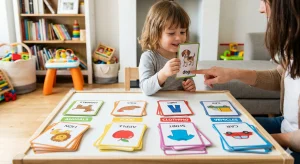Smart Reading Techniques for Students
By Prapoorna M
Last Updated: November 26, 2021
Students work hard during exams and tend to read a lot for memorizing the material. Whereas some students work smartly by following certain study skills like improving attention and giving a good read to the material, through which they can memorize the whole thing easily. So, reading the material also requires some techniques to be followed to help you remember the material easily.
Refining Listening
Hearing refers to the sounds that you hear and interpret sound, whereas listening requires more than that: it requires focus. Listening is paying attention to both verbal and non-verbal messages. Depending up on the degree to which you perceive and understand, you will be termed as an effective listener, whereas having good hearing does not make you so. Effective listening means focusing on the meaning of the words that
you hear and put them into context to gain an understanding that includes other senses and cognitive processes. Listening is a learnt skill and an active process. Our brains have to work harder to process the
information that we hear and see in order to understand the meaning of the message. Understanding is the goal of listening.
Tips for active listening
Here are some tips for active listening. Make your listening active to understand it completely and thus to help you work smart.
- Prepare with a positive, engaged attitude
- Focus your attention on the subject
- Stop all non-relevant activities before to familiarize yourself to the topic
- Review mentally what you already know about the subject
- Organize the relevant material in advance to develop it further
- Collect all the previous lessons, newspaper articles, web sites, prior real life experience, etc.
- Focus on what the teacher explains.
- Put the other things out of mind. Human mind itself has the ability to get distracted easily. For example: What’s for lunch today?, At what time do I need to leave?, Is it going to rain? Etc.
- Try to put other thoughts out of mind and just concentrate on the messages that are being communicated, being mindful.
- While you listen, use some gestures or words to encourage continuing.
- Remember to maintain eye contact but don’t stare. Show the teacher that you are listening and understanding what is being said, through your body language.
- You should focus on what is being said
- Avoid unnecessary actions. Don’t scribble, shuffle papers, look out the window, and pick your fingernails.
- Avoid unnecessary interruptions as such behaviors disrupt the listening process and send messages to the teacher that you are bored or distracted.
- Seat yourself appropriately close to the teacher
- Avoid distractions (a window, a talkative friend, noise, etc.)
- Set aside your preconceptions, your opinions
- You are present to learn what the teacher has to say, not the other way around
- Be other-directed; focus on the person communicating
- Listen with all your sense organs including your ears.
- Actively respond to the questions and directions in your class.
- Focus your attention to encourage the teacher and signal your interest by leaning forward.

Cultivating Reading skills
By improving your reading skills, you can reduce unnecessary reading time and read in a more focused and selective manner. You will also be able to increase your levels of understanding and concentration. Go ahead and read with greater efficiency and effectiveness by using a range of different reading skills.
Reading goals
Having clear reading goals can improve your reading skills. Such clear reading goals can significantly increase your efficiency in reading. Not everything in print will be of use to you. Use reading goals to select and
prioritize information according to the task in hand.
Reading goals include
- Using the right reading style
- Choosing the right texts
- Preparing an essay
- A selected subject area
- A series of questions about a specific topic
- Using note taking techniques
Reading style
In your everyday situations, you already use a range of reading styles. If you are reading a novel, you generally read in detail, focusing on every word in sequence from start to finish. If it is a magazine that you intend to read, you might flick through the pages to see which articles are of interest. While looking for a particular name in a telephone directory, you purposefully ignore all other entries and focus your attention on identifying the name you want. All these everyday reading skills can also be applied to your studies.
Choosing a text
To see if the text contains information that is relevant to your reading goals, you first need to assess the text.
- Check the contents page for such relevant chapters.
- Look up references for your topic in the index and if the text does not seem relevant, discard it.
Once you have selected a text you can use the following techniques of scanning and skimming to help you identify areas for detailed reading.
Scanning
Scanning is a reading technique that one uses to find specific information without reading the whole text. When you search a page quickly and efficiently for important words, facts or phrases to find the specific information, you will just look down in to the text and also around it, in the thought of looking at such words. This process is scanning. When scanning a text, one should use peripheral vision and shouldn’t focus only on the logical flow of the text
You can scan the following.
The introduction or preface of a text
- The first or last paragraphs of chapters
- The concluding or summarizing chapter of a text
- The book index
Scanning often comes before skimming. For example, scanning can be used to determine if a resource has the information you are looking for. Once the resource is scanned, it can then be skimmed for more detail.
What is Skimming
Skimming is a reading technique using which you can understand the whole text without reading it from word to word. Skimming involves discovering the main ideas and concept of a text by reading the initial
and final paragraphs and topic sentences, while paying attention to other details on the page like titles, bold type or italics, photograph captions, etc. Skimming is the process of speedy reading for general meaning. Though your eyes skip over sentences or phrases, in this process, which contain detail, you get it by concentrating on identifying the central or main points.
One can use this technique to:
- Pre-view a selection of text prior to detail reading
- To refresh what you understood from the text selected, following detailed reading.
Light reading
Usually when we read in leisure periods, it can be understood as Light reading. This form of reading does not generally require detailed concentration.
Light reading involves
- Reading at a pace which feels comfortable.
- Reading with understanding
- Skim out the boring, irrelevant passages.
It is a common notice that an average light reading speed is 100-200 words per minute.
Detailed reading and note taking
After just glancing through, once you have selected useful information, you can then begin to read in detail. The most useful aid to reading are the note taking techniques that help you to focus more. Underline and highlight what seem to you the most central or important words and phrases. Always remember to do this only in your own copy of texts or on photocopies, but never on borrowed texts Use keywords to record the main headings as you read them. For each main point you read, you can use one or two keywords. They can be used usually when you don’t want to mark the text.
Put questions to yourself to encourage you taking an active approach to your reading. Record your questions as you read, as they can also be used as prompts for following up the work. Read the summaries given at the end to check you have understood what you have read. If not, pause after a section of text and put what you have read in your own words. This summarizes the whole thing you read. Now, skim over the text to check the accuracy of your summary, by filling in any significant gaps. Following these techniques encourage an active engagement with the text and provide you with a useful record of your reading. Also, avoid passively reading large amounts of text as it does not make effective use of your time and would make you feel bored. Always use a note taking technique to increase your levels of concentration and understanding.

Word by word type reading
Word by word type reading is really time consuming and demands a high level of concentration. Use this type of reading for unfamiliar concepts, scientific formulae etc.
Reading to study
When your aim is to understand the material in depth, you do this kind of reading.
This method involves the following five simple steps
- Survey: Skim through to gain an overview and not key points.
- Question: Devise questions you hope the text will answer.
- Read: Read slowly and carefully.
- Recall: Recall the text from your memory and write down the main points of that chapter.
- Review: Revisit your questions and compare these to your recall.
Observe how well the text has answered them and try filling in any gaps by further reading and note-taking.
Depending on the reading technique and aim, students can
- Underline important, key sentences, and definitions.
- Highlight words or whole paragraphs
- Use special marks on the margin to indicate importance, relevance, or reference to other parts
- Take the required notes in a notebook
- Draw visual representations of the text like charts and graphs etc.
- Start with easier tasks that require recognition, matching, filling in, True/False, multiple choices rather than making outlines, drawing charts and graphs, answering questions, and summarizing.
- Students can work individually, in pairs, or in groups of three. You can start with group work, then pair work, and last individual work.
- You can introduce the topic, ask opinion, and check background and knowledge on the topic
- You can ask a question connected to the main idea and elicit possible answers from the group
- The reading can also be based on the previous class, and used as revision.
- Assign time for completion of the task. Monitor.
- At the end of the task, leave enough time for checking the answers, feedback, comments, and questions.
Increasing your reading speed
People tend to read fast, whereas it is more important to improve your reading skills than your reading speed. The time you spend reading can be reduced by being focused and selective in your reading habits. When you intend to increase your reading speed, besides using a range of reading skills, then the following technique will be of use. When the eye fixes on each word, the average reading speed is about 240-300 words per minute, for an average reader. It is surprising to know that it’s easy for your eye to recognize 4 or 5
words in a single fixation, without any loss of understanding. The key to increase your reading speed is to increase this word span for a single fixation, but not just to increase the speed at which your eyes move across the page. A simple way of developing the habit of taking in more than one word per fixation is to take a page of text and divide it length ways into three with two lines drawn down the page.
Using a pen or pencil as a pointer, read each line of text by allowing your eye to fall only in the middle of each of the three sections, as indicated by your pointer. At this point, don’t worry about how quickly you are reading but instead, concentrate on reading the line in only three fixations. As this becomes more natural, practice without drawing lines. Later, reduce the number of fixations to two per line. Once this increased word span becomes a comfortable habit, an increase in your reading speed will eventually occur.
Reciting
Reciting is an encoding strategy that involves verbalizing the information to be remembered. The student reads the information aloud while studying, engaging both visual and auditory paths of processing. The student may verbalize and record the information on audio tapes and play them while reviewing the material. When combined with repetition and spacing reviews, reciting is a simple and effective approach to encoding. Reciting is useful because it enhances concentration and it forces the student to use more than one sense in processing information.
So these are all the effective ways of improving the reading skills. These study skills are very helpful in gaining the concentration and improving memory while reading. Feel like seeking more help from an expert? Need any career counselling? Do you have something to discuss to improve your quality of life? Book an appointment, today.
FAQs for Improving Study Skills: Reading and Listening Techniques
1. Why is it important to improve study skills, particularly reading and listening techniques?
- Improving study skills, including reading and listening techniques, is crucial for enhancing concentration, understanding, and memory retention while studying. It helps students work more efficiently and effectively.
2. What is the difference between hearing and listening?
- Hearing is the act of perceiving sounds, while listening involves actively paying attention to both verbal and non-verbal messages and understanding their meaning.
3. How can students become active listeners to improve their learning process?
- Students can become active listeners by preparing with a positive attitude, focusing their attention, eliminating distractions, reviewing prior knowledge, organizing relevant materials, and using gestures or words to encourage continuous communication.
4. Why is maintaining eye contact important during active listening?
- Maintaining eye contact with the speaker indicates that you are actively listening and understanding what is being said. It helps in conveying your interest and engagement in the conversation.
5. What are the benefits of improving reading skills for students?
- Improving reading skills allows students to reduce unnecessary reading time, read selectively, increase understanding and concentration, and enhance overall reading efficiency and effectiveness.
6. How can students set clear reading goals to improve their reading skills?
- Setting clear reading goals involves identifying the purpose of reading, selecting relevant texts, and prioritizing information based on the task at hand. It helps in efficient reading and comprehension.
7. What is scanning in the context of reading skills, and when is it useful?
- Scanning is a reading technique used to find specific information without reading the entire text. It is useful when you are searching for particular words, facts, or phrases within a text.
8. What is skimming, and how can it be applied to improve reading skills?
- Skimming is a reading technique that involves quickly grasping the main ideas and concepts of a text without reading it word by word. It can be applied to gain an overview of the text and identify key points.
9. What are the different reading styles that individuals use in everyday situations?
- Everyday reading styles include detailed reading (e.g., reading a novel), skimming (e.g., reading a magazine), and purposeful searching (e.g., looking for a name in a directory).
10. How can individuals increase their reading speed effectively?
- Increasing reading speed is achieved by focusing on increasing word span for each eye fixation, rather than simply trying to read faster. Techniques such as using a pointer and dividing text into sections can help achieve this.
11. What is reciting, and how can it be used to enhance memory and understanding of study material?
- Reciting is an encoding strategy that involves verbalizing information while studying, either by reading it aloud or recording it on audio tapes. It enhances memory and understanding by engaging both visual and auditory processing pathways.
About the Author:
Prapoorna Mangalampalli, Psychologist
Prapoorna, an author with dual master’s degrees in Psychology and English, excels in exploring and enhancing human experiences. Her writing, characterized by deep empathy and insight, primarily focuses on the complexities of counseling, spanning areas such as online, marital, relationship, child, family, and career counseling. Specialized training in various counseling sectors underscores her dedication to positive change. In her blogs, Prapoorna offers valuable guidance and a unique perspective for parents of children with Autism and special needs, creating a supportive community in this realm.
Book your Free Consultation Today
Parent/Caregiver Info:
Client’s Details:
* Error Message









